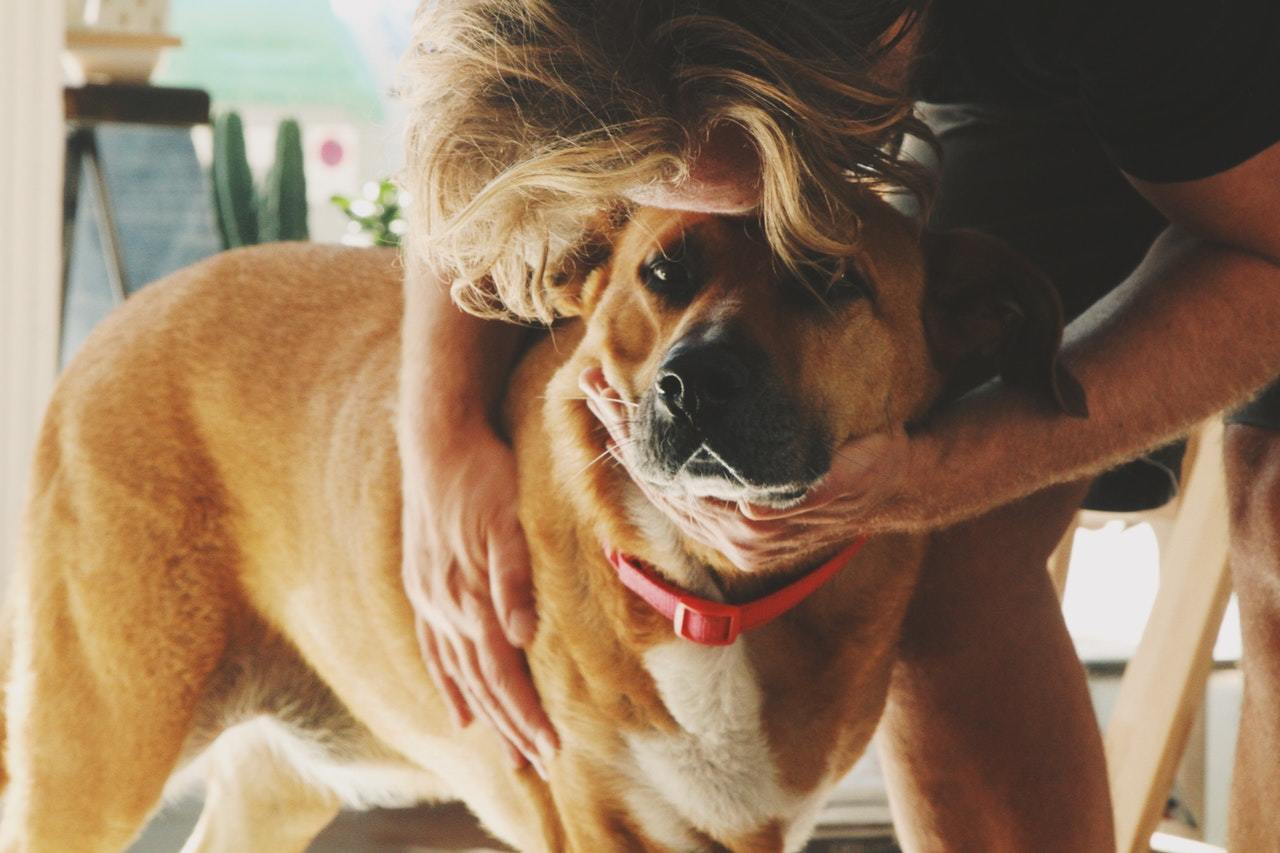Horner’s Syndrome in Dogs and Cats: What to Look for in Your Pet

Horner’s Syndrome is not a disease itself, but a combination of clinical symptoms that can have multiple potential causes. While this can affect dogs and cats of any age, from juveniles to senior pets, it is more commonly seen in middle-aged pets. Continue reading to learn more about Horner’s Syndrome, clinical symptoms, potential causes, testing, and treatment options!
What is Horner’s Syndrome?
Horner’s Syndrome in dogs and cats is a common neurological disorder affecting the eye and facial muscles, caused by dysfunction of the sympathetic nervous system. The sympathetic nervous system is part of the autonomic nervous system which works to control automatic body functions including blinking, muscle tone, and pupil dilation or constriction. Symptoms often appear suddenly, usually affecting one side of the head but in rare cases affects both sides.
Think of the sympathetic nerve supply to the eye as starting at the base of the brain and having 3 sections. The first section of the nerve travels from the base of the brain down the neck within the spinal cord. The nerve exits the spinal cord in the shoulder area and travels through the chest area. The second section of the nerve travels up the neck to the base of the skull. The third section of the nerve takes a complicated route through the skull staying close to the bone of the middle ear before reaching the orbit of the eye. Any damage to this nerve along any of the three paths causes a loss of sympathetic innervation resulting in the symptoms of Horner’s Syndrome listed below.
Symptoms or Signs of Horner’s Syndrome in Dogs and Cats
The most common signs of Horner’s Syndrome include the following, and animals need to have three out of four of these symptoms in order to call it Horner’s Syndrome:
- Miosis: where the pupil of the eye on the affected side is constricted or smaller than usual.
- Ptosis: drooping of the upper eyelid on the affected side
- Enophthalmos: where the eye on the affected side often appears sunken
- Conjunctival hyperemia: where the third eyelid on the affected side appears red, raised, elevated, or protruded
Usually, symptoms develop on one side of the head but in rare cases can occur on both sides at the same time.
Dogs with Horner’s Syndrome can experience increased salivation and/or difficulty eating/chewing on the affected side.
In some cats, having a raised third eyelid is the only obvious symptom of Horner’s Syndrome. In such cases, a veterinarian must consider problems such as facial paralysis (which often happens with severe ear infections), severe dehydration, or Haw’s paralysis. In addition, cats can have a rare disorder called feline dysautonomia or Key-Gaskell syndrome with Horner’s Syndrome symptoms. These can include constricted pupils and elevated third eyelids in addition to retaining urine, constipation, and other problems having to do with severe disruption of the sympathetic nervous system.

Causes of Horner’s Syndrome in Dogs and Cats
- 50% of Horner’s Syndrome cases in dogs and 40% of cases in cats are idiopathic, meaning no known cause can be found. However, in cats, idiopathic Horner’s Syndrome is very rare.
- Blunt trauma to the head, neck, or chest such as being hit by a car or due to fight wounds accounts for the most frequent cause of Horner’s Syndrome in cats.
- Other cervical/thoracic spinal cord damage (intervertebral disc disease or fibrocartilaginous embolization)
- Tumors in the chest cavity such as thymoma, lymphoma, affecting the lungs or pressure from a hematoma
- Tumors in the neck or skull areas such as the brainstem, hypothalamus or cavernous sinus, thyroid, and parathyroid glands
- Diseases within the eye or in the retrobulbar area (area behind the eye)
- Secondary to surgical trauma in the area of the neck or around the ear
- Middle ear disease including infection, polyps, or other middle ear lesions
- Can happen secondary to a routine blood draw, excessive restraint, or nerve blocks around the face/neck area
Diagnosing Horner’s Syndrome in Dogs and Cats
Determining the location of the nerve damage helps determine the cause of Horner’s Syndrome. The nerve pathway is divided into three parts which help with locating the affected area as well as determining the cause of the nerve damage or uncovering other problems in that area:
- First order Horner’s Syndrome describes nerve damage within the brain and spinal cord often associated with trauma. Studies have shown an association with endocrine diseases, like hypothyroidism or Cushing’s disease, pets with Horner’s Syndrome.
- Second order Horner’s Syndrome describes nerve damage between the chest cavity and the base of the skull which could be tumors in the chest area or neck trauma.
- Third order Horner’s Syndrome, which is the type most often seen in dogs, describes nerve damage between the base of the skull and the eye and often happens with inner or middle ear disease.
Dogs with Third order Horner’s Syndrome will often need further diagnostics by their vet to determine if the cause is a systemic disease or an inner or middle ear problem. The vet will often refer a pet to a Board-Certified Veterinary Ophthalmologist to determine the location of the nerve damage. The veterinary ophthalmologist may do a test to stimulate different areas of the nerve using medicated eye drops. Dogs suspected to have First or Second order Horner’s Syndrome will often be referred to a Board Certified Veterinary Neurologist for further testing such as advanced imaging.
Does my dog or cat experience pain from Horner’s Syndrome?
Symptoms of Horner’s Syndrome are not usually painful but can contribute to vision problems due to conjunctival hyperemia (elevation of the third eyelid).
Any underlying cause such as a middle ear infection, trauma to the head and neck, spinal cord injury, tumor, or other causes can be painful. Pain management medication determined by your vet depends on the symptoms and any underlying cause.

Treating Horner’s Syndrome in Dogs and Cats
The good news is that most pets with Horner’s Syndrome recover on their own over time, however, any underlying illness must be treated. Diagnostic tests including an eye and ear exam, radiographs (x-rays) of the head and chest, and further testing may be needed including a CT scan or MRI to rule in or out any underlying illness.
Your vet may recommend using eye drops such as phenylephrine to dilate the pupil in the affected eye and/or to help determine the cause of Horner’s Syndrome. Most patients experiencing Horner’s Syndrome do not need medical treatment for the affected eye.
Pets determined to have idiopathic Horner’s Syndrome often improve within 2-6 months or longer. Most cases resolve completely but a few may have lingering or ongoing signs.
Pets diagnosed with an inner or middle ear infection need treatment such as ear flushing under sedation or anesthesia, and appropriate antibiotics. Horner’s Syndrome should resolve as the infection is cleared.
Horner’s Syndrome due to a tumor may need to be treated with surgery, radiation therapy, and/or chemotherapeutic options.
Cats with Horner’s Syndrome that cannot blink normally need supportive care and veterinary treatment such as eye lubricants to prevent corneal ulcers. Dogs and cats experiencing conjunctivitis (inflammation of the pink tissue around the eye) may need treatment such as prescription anti-inflammatory eye medication.
What breeds are most prone to Horner’s Syndrome?
Horner’s Syndrome affects dogs and cats of any age and either sex. However, dog breeds including Golden Retrievers, Doberman Pinschers, Labrador Retrievers, Shetland Sheepdogs, and Weimaraners seem to have a higher incidence.

Recovering from Horner’s Syndrome
The outcome depends on the treatment of the underlying cause. as some illnesses are quite severe and potentially life-threatening. If no underlying disease can be found, Horner’s Syndrome tends to be self-resolving but can take weeks or months depending on the severity of symptoms.
Read more:
A Vet’s Advice: Eye Exams and Eye Care for Your Pets
Need to speak with a veterinarian regarding your pet’s Horner’s Syndrome or another condition?
Click here to schedule a video consult to speak to one of our vets. You can also download the FirstVet app from the Apple App Store and Google Play Stores.

